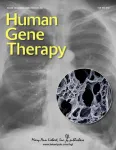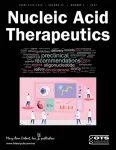(Press-News.org) The human body can predict the timing of regular meals, according to a new study from the University of Surrey. The research team also found that daily blood glucose rhythms may be driven not only by meal timing but by meal size.
In the first study of its kind, researchers from Surrey, led by Professor Jonathan Johnston, investigated if the human circadian system anticipates large meals. Circadian rhythms/systems are physiological changes, including metabolic, that follow a 24-hour cycle and are usually synchronised to environmental signals, such as light and dark cycles.
Previous studies in this field have focussed on animal controls and until now it has been undetermined whether human physiology can predict mealtimes and food availability.
Jonathan Johnston, Professor of Chronobiology, and Integrative Physiology at the University of Surrey said:
“We often get hungry around the same time every day, but the extent to which our biology can anticipate mealtimes is unknown. It is possible that metabolic rhythms align to meal patterns and that regularity of meals will ensure that we eat at the time when our bodies are best adapted to deal with them.”
To learn more, 24 male participants undertook an eight-day laboratory study with strict sleep-wake schedules, exposure to light-dark cycles, and food intake. For six days, 12 participants consumed small meals hourly throughout the waking period, with the remaining participants consuming two large daily meals (7.5 and 14.5 hours after waking).
After six days, all participants were then put on the same feeding schedule for 37 hours and received small meals hourly in a procedure known to reveal internal circadian rhythms. Glucose was measured every 15 minutes during the study, and hunger levels were measured hourly during waking hours on days two four and six in the first stage of the study and then hourly for the final 37 hours.
Analysing results of the first six days of the study, researchers found the glucose concentration of participants in the small meal group increased upon waking and remained elevated throughout the day until declining after their last meal. In the large meal group, there was a similar increase in glucose concentration upon waking however there was a gradual decline leading up to the first meal.
In the final 37 hours, when both groups were fed the same small meals hourly, all participants exhibited an initial rise in glucose concentration upon waking. However, in those who had previously received two large meals, glucose levels began to decline before the anticipated large meal (which they did not receive) whereas for participants who had always consumed small meals hourly, their glucose levels continued to rise as previously seen. In addition, in the large meal group, there was an increase in hunger preceding projected mealtimes which sharply declined after the anticipated mealtime had passed.
Professor Johnston added:
“What we have found is that the human body is rhythmically programmed to anticipate mealtimes particularly when food is not readily accessible. This suggests that there is a physiological drive for some people to eat at certain times as their body has been trained to expect food rather than it just being a psychological habit.”
This study was published in the journal Current Biology.
Also involved in this study are Dr Cheryl Isherwood, Professor Debra Skene, Dr Daan Van Deer Veen and Dr Hana Hassanin.
END
Human body proven to predict mealtimes
2023-02-22
ELSE PRESS RELEASES FROM THIS DATE:
James Webb spots super old, massive galaxies that shouldn’t exist
2023-02-22
In a new study, an international team of astrophysicists has discovered several mysterious objects hiding in images from the James Webb Space Telescope: six potential galaxies that emerged so early in the universe’s history and are so massive they should not be possible under current cosmological theory.
Each of the candidate galaxies may have existed at the dawn of the universe roughly 500 to 700 million years after the Big Bang, or more than 13 billion years ago. They’re also gigantic, containing almost as many stars as the modern-day Milky Way Galaxy.
“It’s ...
Climate ‘spiral’ threatens land carbon stores – study
2023-02-22
The world’s forests are losing their ability to absorb carbon due to increasingly ‘unstable’ conditions caused by humans, a landmark study has found.
Dramatic changes to forests, and other habitats that store carbon in plants and soils, are becoming more likely in some regions across Earth, with less carbon consistently absorbed by the ‘land carbon sink’ provided by trees, soil and plants, according to scientists writing in Nature.
The short-term impacts of rising temperatures, ...
Anti-dust tech paves way for self-cleaning surfaces
2023-02-22
Dust is a common fact of life, and it's more than just a daily nuisance – it can get into machinery and equipment, causing loss of efficiency or breakdowns.
Researchers at The University of Texas at Austin partnered with North Carolina-based company Smart Material Solutions Inc. to develop a new method to keep dust from sticking to surfaces. The result is the ability to make many types of materials dust resistant, from spacecraft to solar panels to household windows.
The research is published in ACS Applied Materials & Interfaces.
"What we've ...
Today’s pediatric heart transplantations involve sicker children, but have better outcomes
2023-02-22
Key takeaways
Heart transplants offered to more patients with serious disease: A study of 323 pediatric heart transplants over 36 years at the University of Florida found that in recent years, more infants with serious congenital heart disease were offered heart transplants, but they had improved outcomes compared to patients in previous decades.
Improved long-term survival: Despite extending the procedure to younger patients with more serious heart problems, 5-year survival improved from 70.7% in previous years to 83% in recent ...
Deep earthquakes could reveal secrets of the Earth’s mantle
2023-02-22
A new study from a University of Chicago scientist suggests there may be a layer of surprisingly fluid rock ringing the Earth, at the very bottom of the upper mantle.
The finding was made by measuring the lingering movement registered by GPS sensors on islands in the wake of a deep earthquake in the Pacific Ocean near Fiji. Published Feb. 22 in Nature, the study demonstrates a new method to measure the fluidity of the Earth’s mantle.
“Even though the mantle makes up the largest part of Earth, there’s ...
Study offers details on using electric fields to tune thermal properties of ferroelectric materials
2023-02-22
New research from North Carolina State University sheds light on how electric fields can be used to alter the thermal properties of ferroelectric materials, allowing engineers to manipulate the flow of heat through the materials. Ferroelectric materials are used in a wide variety of applications, from ultrasound devices to memory storage technologies.
“Our work here is a significant advance because we worked with large sample sizes and provide detailed information on the relationship between the type of electric field being applied to the ferroelectric material and the thermal response in the material,” says Jun Liu, an associate professor of mechanical and aerospace ...
Second generation gene therapy for alpha 1-antitrypsin deficiency
2023-02-22
Researchers report on the safety of a gene therapy to treat the common autosomal recessive hereditary disorder alpha 1-antitrypsin (AAT) deficiency in a new article in the peer-reviewed journal Human Gene Therapy. Click here to read the article now.
In ATT deficiency, neutrophil proteases destroy the lung parenchyma, the portion of the lungs involved in gas exchange. The result is a high risk for the early onset of emphysema. Ronald Crystal, MD, from Weill Cornell Medicine, and coauthors, have developed an adeno-associated virus (AAV) serotype 8-based gene ...
Medical-legal partnerships are valued by immigrant, migrant populations
2023-02-22
(Boston)—Immigration status, immigration vulnerability and understanding of immigration-related legal options are critical components of safety, access to public benefits and wellness for many immigrants/migrants. While immigration status is increasingly recognized as an independent social determinant of health, understanding best practices for health care systems that might mitigate the health disparities that result from unequal health care access dictated by immigration status is just beginning to be studied.
In an effort to better understand best practices, researchers from Boston University ...
Terminal sterilization of oligonucleotide drug products
2023-02-22
A new report, coauthored by several major pharmaceutical companies, reviews the current state of sterile oligonucleotide drug product processing. The article, which provides recommendations to aid in the evaluation and development of terminal sterilization processes, is published in the peer-reviewed journal Nucleic Acid Therapeutics. Click here to read the article.
All marketed oligonucleotide products are delivered as sterile preparations for parenteral delivery. The two most common methods for sterilizing parenteral ...
Novel quantum entanglement lets researchers spy on atomic nuclei
2023-02-22
COLUMBUS, Ohio – Nuclear physicists have found a way to peer inside the deepest recesses of atomic nuclei, according to a new study.
The finding was made possible using the Relativistic Heavy Ion Collider (RHIC) at the Brookhaven National Laboratory in New York, which is capable of colliding gold ions at near light-speed. It led to the discovery of a new kind of quantum entanglement.
The term quantum entanglement describes an invisible link that connects distant objects; no matter how far away they are in space, they affect each ...


